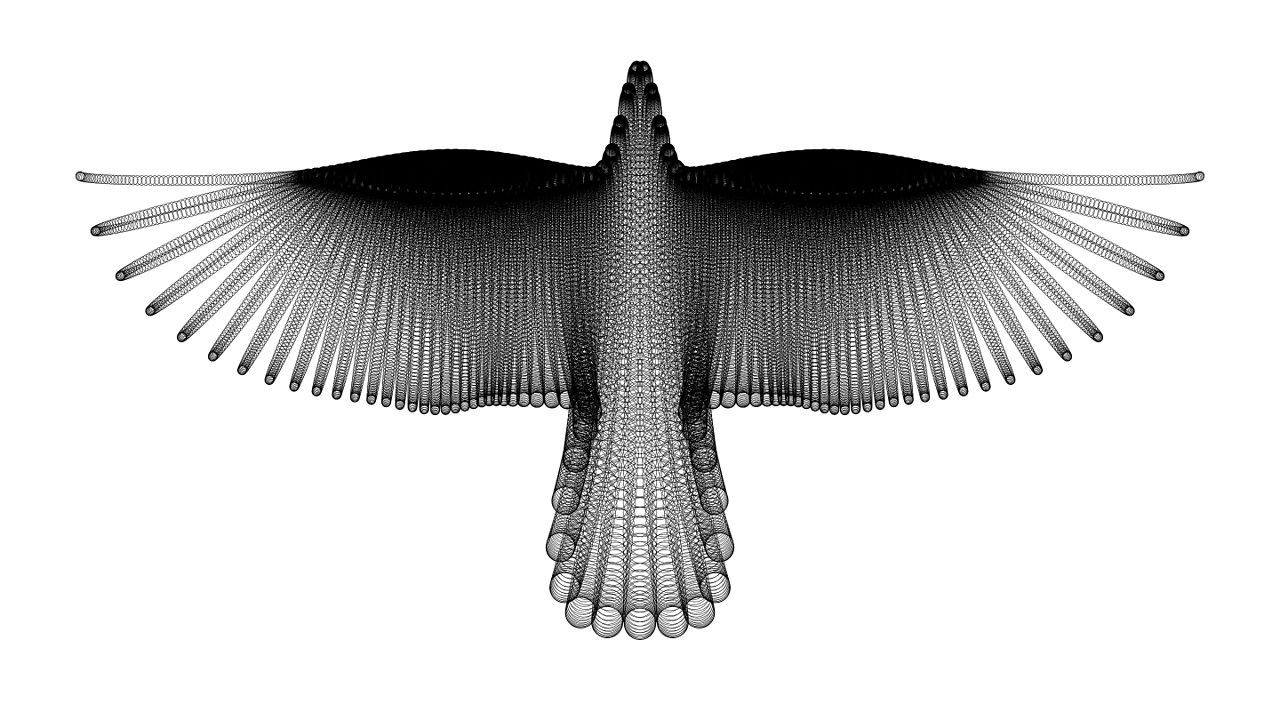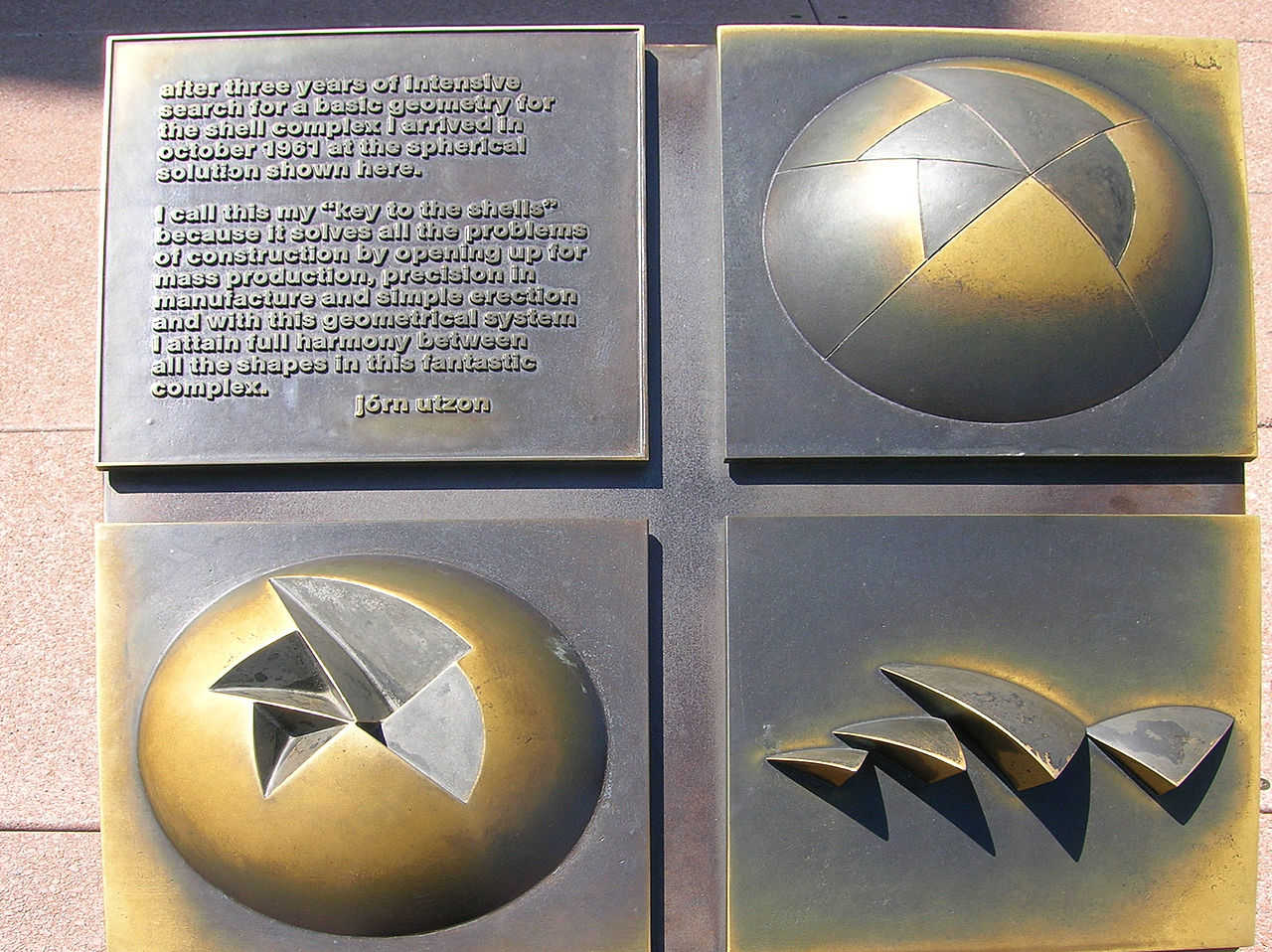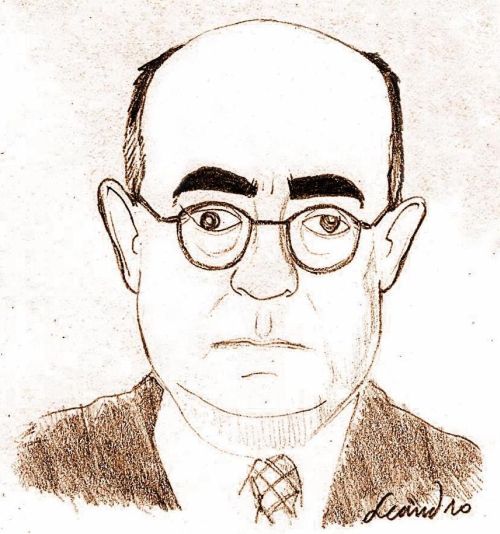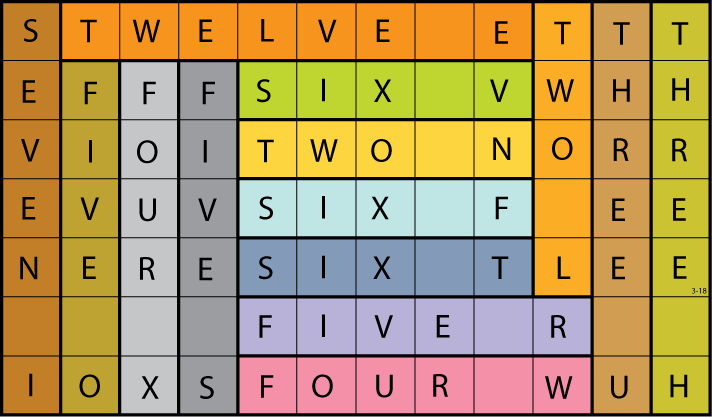The esoteric programming language DOGO “heralds a new era of computer-literate pets.” Commands include:
SIT — If the value of the current memory cell is 0, jump to STAY.
STAY — If the value of the current memory cell is not 0, jump to SIT.
ROLL-OVER — Select the next operation in the operation list.
HEEL — Execute the currently selected operation.
This program prints the words HELLO WORLD:
roll-over roll-over heel roll-over roll-over roll-over roll-over heel heel heel heel heel heel heel heel heel sit roll-over roll-over roll-over heel roll-over roll-over roll-over heel heel heel heel heel heel heel heel roll-over roll-over heel roll-over roll-over roll-over roll-over roll-over heel roll-over roll-over roll-over roll-over roll-over stay roll-over roll-over roll-over heel roll-over roll-over heel roll-over roll-over roll-over heel roll-over roll-over roll-over roll-over heel heel heel heel heel heel heel sit roll-over roll-over roll-over heel roll-over roll-over roll-over heel heel heel heel roll-over roll-over heel roll-over roll-over roll-over roll-over roll-over heel roll-over roll-over roll-over roll-over roll-over stay roll-over roll-over roll-over heel roll-over roll-over roll-over heel roll-over roll-over roll-over roll-over roll-over heel roll-over heel heel heel heel heel heel heel roll-over roll-over roll-over roll-over roll-over heel heel roll-over heel heel heel roll-over roll-over roll-over roll-over roll-over heel roll-over roll-over roll-over heel heel heel roll-over roll-over roll-over roll-over heel heel heel heel heel heel heel heel sit roll-over roll-over roll-over heel roll-over roll-over roll-over heel heel heel heel roll-over roll-over heel roll-over roll-over roll-over roll-over roll-over heel roll-over roll-over roll-over roll-over roll-over stay roll-over roll-over roll-over heel roll-over roll-over heel roll-over roll-over roll-over heel heel heel roll-over roll-over roll-over roll-over heel heel heel heel heel heel heel heel heel heel sit roll-over roll-over roll-over heel roll-over roll-over roll-over heel heel heel heel heel heel heel heel heel roll-over roll-over heel roll-over roll-over roll-over roll-over roll-over heel roll-over roll-over roll-over roll-over roll-over stay roll-over roll-over roll-over heel roll-over roll-over roll-over roll-over heel heel heel roll-over roll-over roll-over roll-over heel roll-over roll-over roll-over roll-over heel heel heel heel roll-over roll-over heel roll-over heel heel heel roll-over roll-over roll-over roll-over roll-over heel roll-over roll-over heel heel heel heel heel heel roll-over roll-over roll-over roll-over heel roll-over roll-over heel heel heel heel heel heel heel heel roll-over roll-over roll-over roll-over heel roll-over roll-over roll-over heel heel roll-over roll-over roll-over roll-over heel roll-over roll-over roll-over roll-over roll-over heel
Here’s a similar program in Blub, which is designed to be readable by fish:
blub. blub? blub. blub. blub. blub. blub. blub. blub. blub. blub. blub. blub. blub. blub. blub. blub. blub. blub. blub. blub! blub? blub? blub. blub. blub. blub. blub. blub. blub. blub. blub. blub. blub. blub. blub. blub. blub. blub. blub. blub. blub? blub! blub! blub? blub! blub? blub. blub! blub. blub. blub? blub. blub. blub. blub. blub. blub. blub. blub. blub. blub. blub. blub. blub. blub. blub! blub? blub? blub. blub. blub. blub. blub. blub. blub. blub. blub. blub. blub? blub! blub! blub? blub! blub? blub. blub. blub. blub! blub. blub. blub. blub. blub. blub. blub. blub. blub. blub. blub. blub. blub. blub. blub. blub! blub. blub! blub. blub. blub. blub. blub. blub. blub. blub! blub. blub. blub? blub. blub? blub. blub? blub. blub. blub. blub. blub. blub. blub. blub. blub. blub. blub. blub. blub. blub. blub. blub. blub! blub? blub? blub. blub. blub. blub. blub. blub. blub. blub. blub. blub. blub? blub! blub! blub? blub! blub? blub. blub! blub. blub. blub? blub. blub? blub. blub? blub. blub. blub. blub. blub. blub. blub. blub. blub. blub. blub. blub. blub. blub. blub. blub. blub. blub. blub. blub. blub! blub? blub? blub. blub. blub. blub. blub. blub. blub. blub. blub. blub. blub. blub. blub. blub. blub. blub. blub. blub. blub. blub. blub? blub! blub! blub? blub! blub? blub. blub! blub! blub! blub! blub! blub! blub! blub. blub? blub. blub? blub. blub? blub. blub? blub. blub! blub. blub. blub. blub. blub. blub. blub. blub! blub. blub! blub! blub! blub! blub! blub! blub! blub! blub! blub! blub! blub! blub! blub. blub! blub! blub! blub! blub! blub! blub! blub! blub! blub! blub! blub! blub! blub! blub! blub! blub! blub. blub. blub? blub. blub? blub. blub. blub! blub.
See User Friendly.







